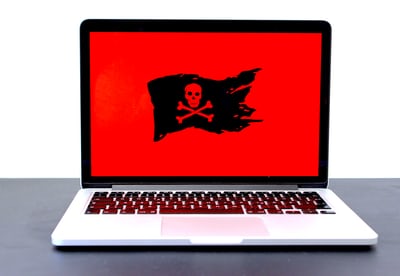Malware short history
In 1971 Bob Thomas wrote a program for BBN Technologies and unlike most programs at the time it had no productive purpose other than for research. It was designed to slowly fill up the storage of a computer until it was so full that the computer could no longer operate properly. They called this program “Creeper”. Later on, Ray Tomlinson created another program called “Reaper” and this was designed to search for Creeper and remove it. Later revisions could copy themselves over the network to find the Creeper. Ray Tomlinson created what is arguably the first anti-virus software, which ironically behaved like a worm virus by spreading automatically and applying its changes. Ever since, more and more of these infectious programs have been developed and have become a serious problem for the modern world. There are many innocuous viruses that merely exist to spread and achieve little other than to take up bandwidth and space, but for every benign program there are countless malicious ones.
Types of malware
There are many different categories of virus starting with the standard virus, which can corrupt or change files on a computer. Then there is the worm which spreads over a network, a trojan which pretends to be a regular file but contains a virus/worm. Ransomware, scareware and spyware are probably the most common threats in today’s world. These modern threats are designed to extract wealth from targets, which are often corporations or institutions. Ransomware is the most destructive, as it can encrypt and convert a target’s files into an unusable form, withholding the solution until payment is received, often in bitcoin or another hard-to-trace currency. Scareware relies on the user’s fears to encourage them to pay to fix a problem they probably don’t have, by claiming there is a serious problem with a computer. Spyware on the other hand will try to remain hidden while it tries to capture payment or other valuable information. The main aim of ransom, scare and spyware is to generate profit for the virus promulgator.
Are you worried yet?
Earlier this year we were tasked with recovering a server from a malicious attack of malware. After the initial investigation we found that we could not just recover the files as it had got in too deep. So, we had to roll the server back to a previous image using one of our bespoke backup systems for servers.
It consists of a little blue box which takes a backup every 2 hours and is a complete image recovery system. It can also run up a virtualised version of your server in the cloud which you can connect your site to and use for up to a month whilst your server is being repaired.
In this instance we did not use this feature we just recovered the server and rebuilt all the PCs that were affected.
Is your security strong enough?
We always advise a strong and secure password for your systems.
Password1 won’t cut it – and once a virus compromises your network that’s it. The process for the virus will be:
- What it can see on the network
- Any connection to a server
- Where it can do the most damage
- Use a brute force attack using all the usernames and passwords that are easy to crack
- SYSTEM COMPROMISED!
Once this has happened it will have gained access to your server or PC if you have a weak password and insufficient antivirus systems.
Most viruses these days come in on an email attachment or a malicious link in an email. They can seem to come from people you know. So, if you think it is suspicious then call them to check they sent it before opening or clicking on anything. Humans are the weak link.
It’s your data, have confidence it’s safe!
Remember that although antivirus is one of the most positive steps in business security it does not guarantee total, 100% protection.
We always recommend antivirus as a must for your business security next to other security measures such as firewall protection, VPN software, endpoint protection, backups and more backups etc. If you would like to learn more about security measures you should talk to us.
At Octagon Technology we adapt to the highest security stance and are on top of data privacy. Clive Catton (CIO) and Diana Catton (MD) have a joint venture with an international research company to get access for our clients to up-to-date information, schemas, analysis, templates, actionable tools and guidance. Whatever the size of your organisation if you are not approaching IT, security and privacy in a way that supports and benefits you, they can help, from the boardroom to the shop floor. You can book them for an hour to discuss your company’s security and privacy and we shall provide you with a privacy template to complete with our help and use on your website. Email me at kamila@octagontech.com to arrange a time.
Kamila
General Manager


